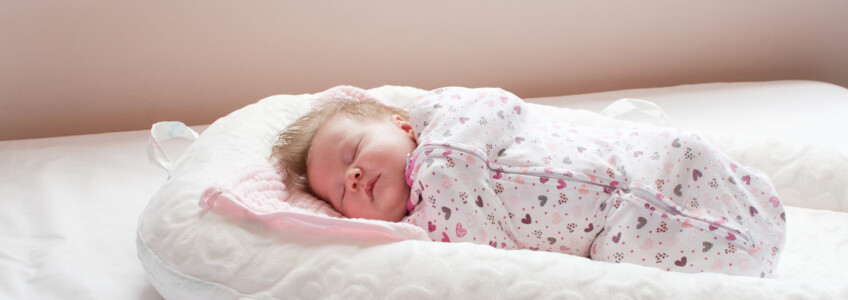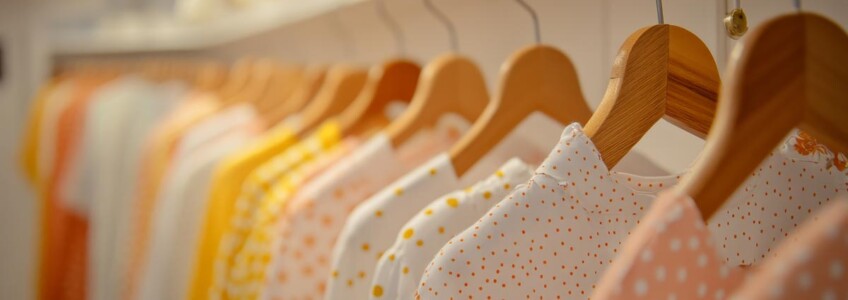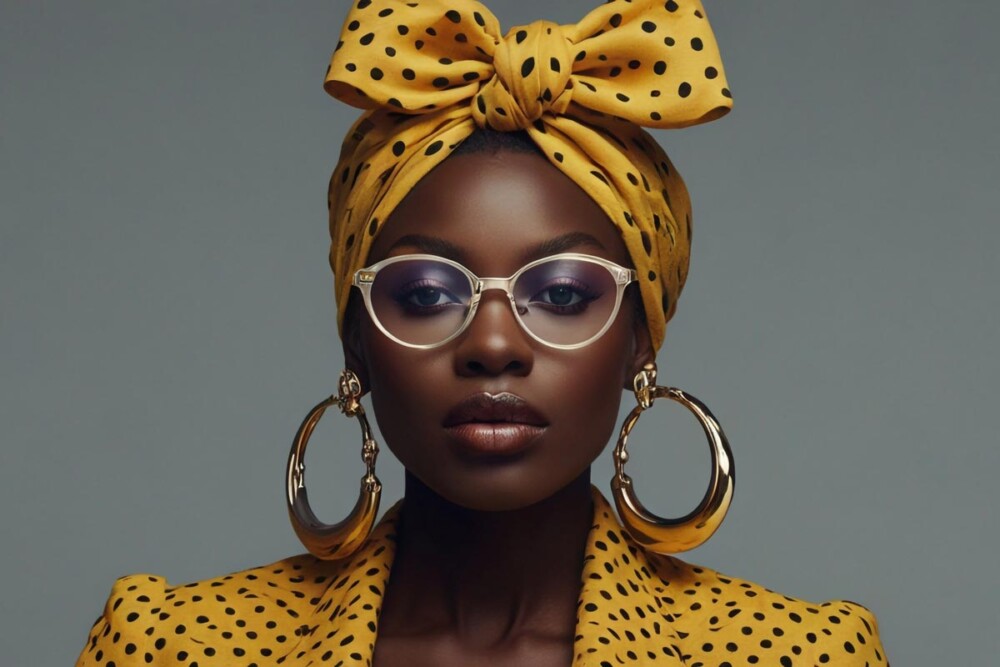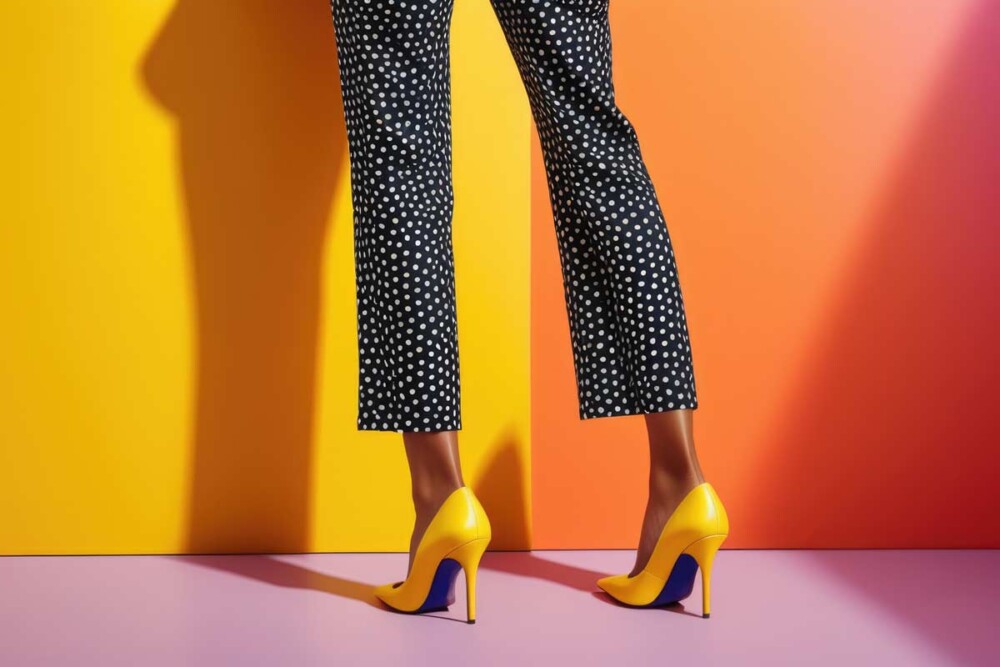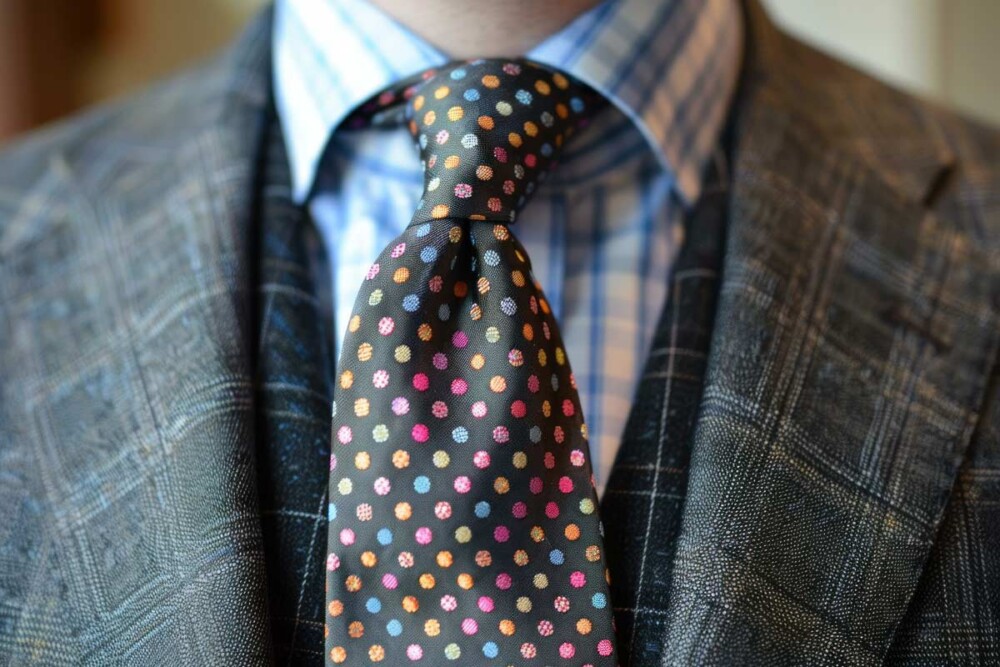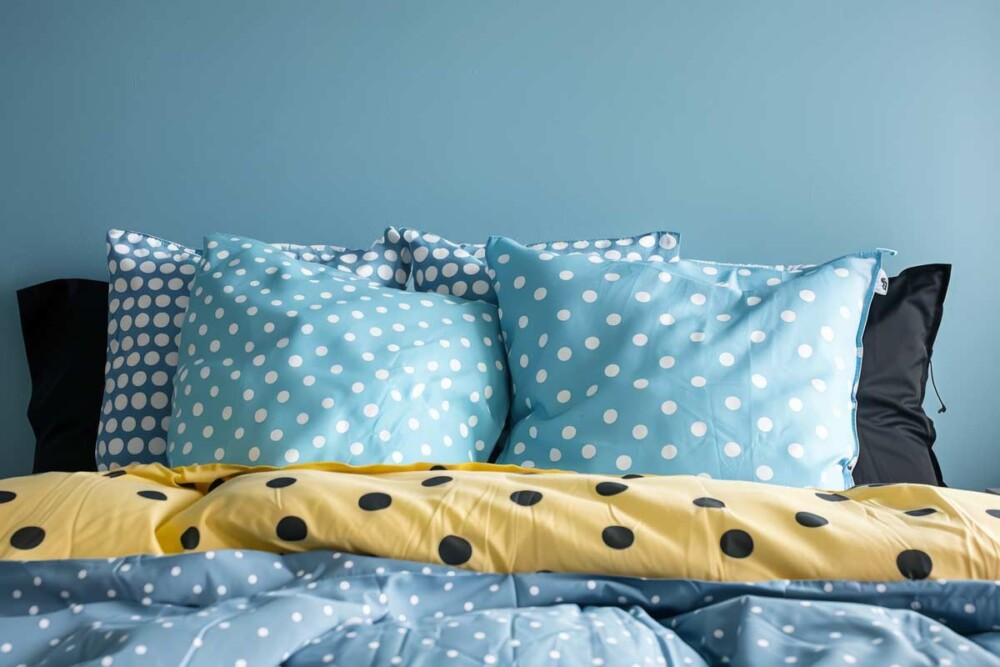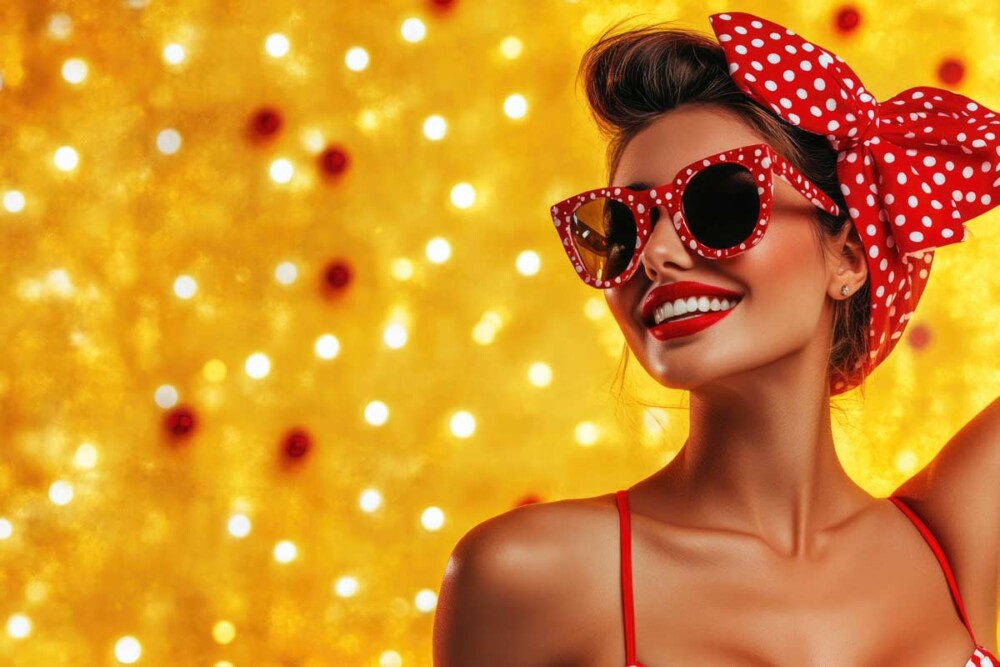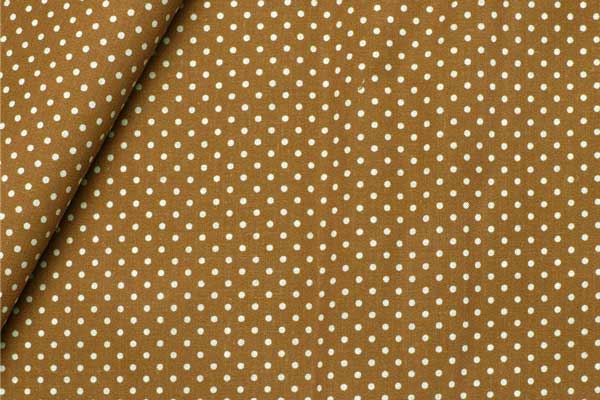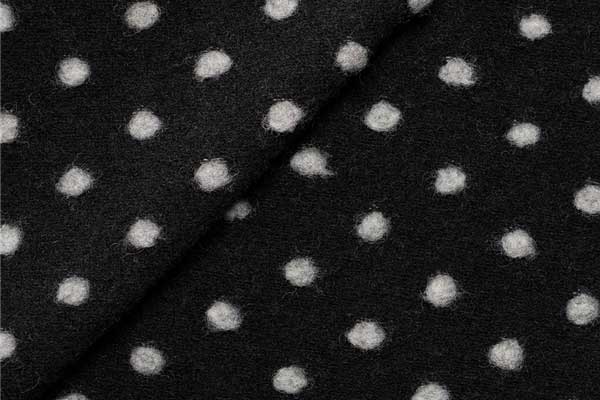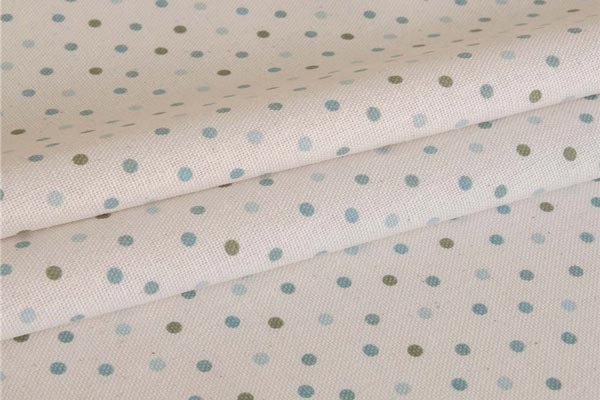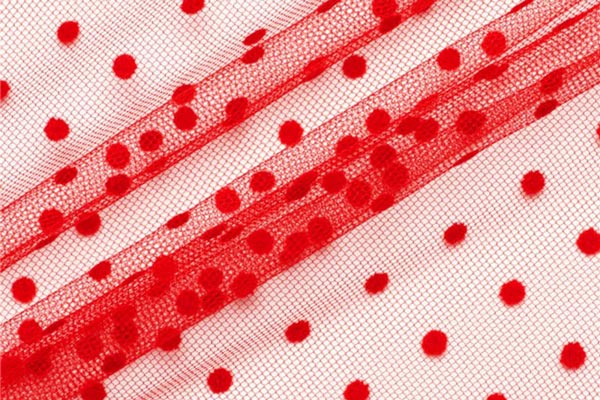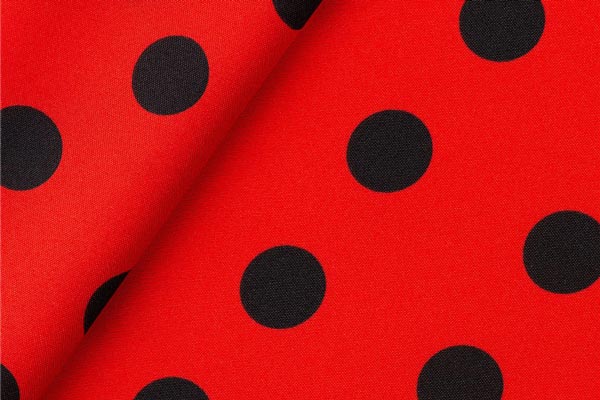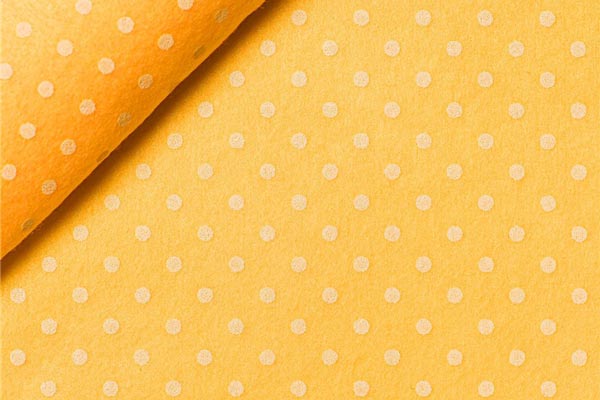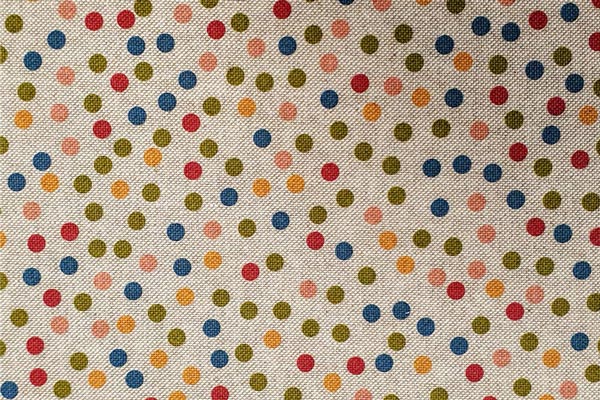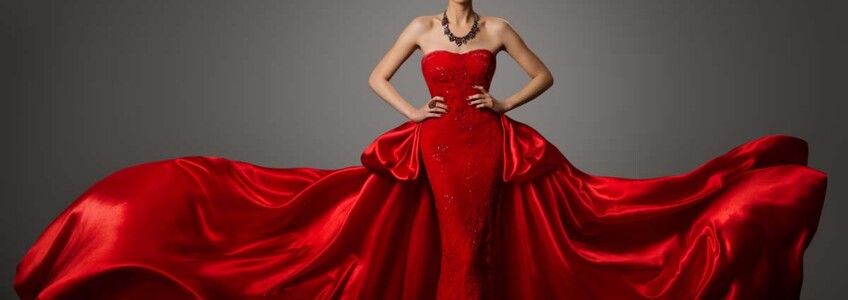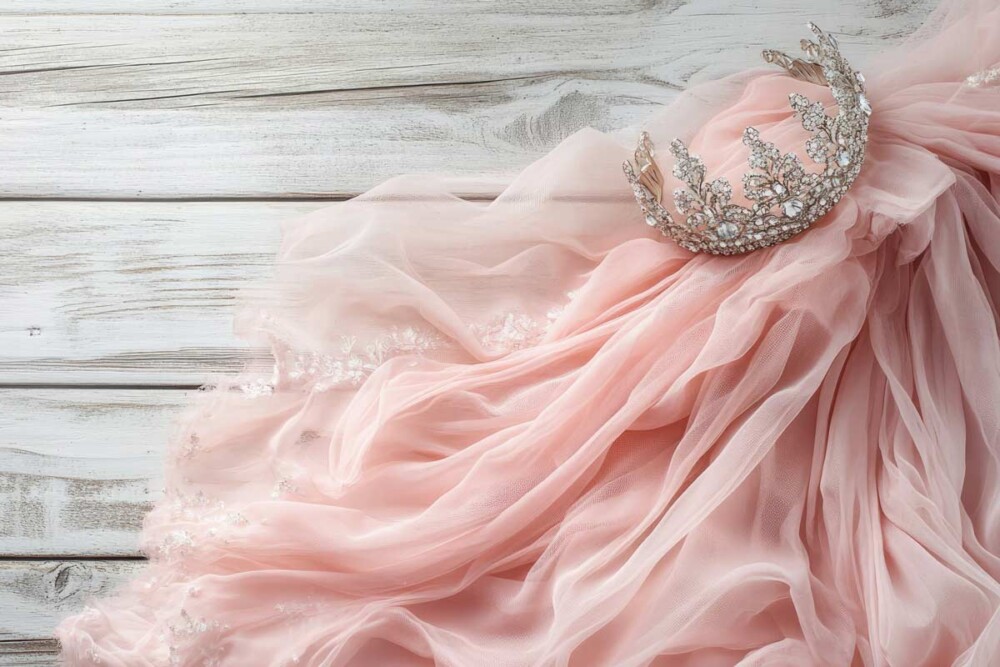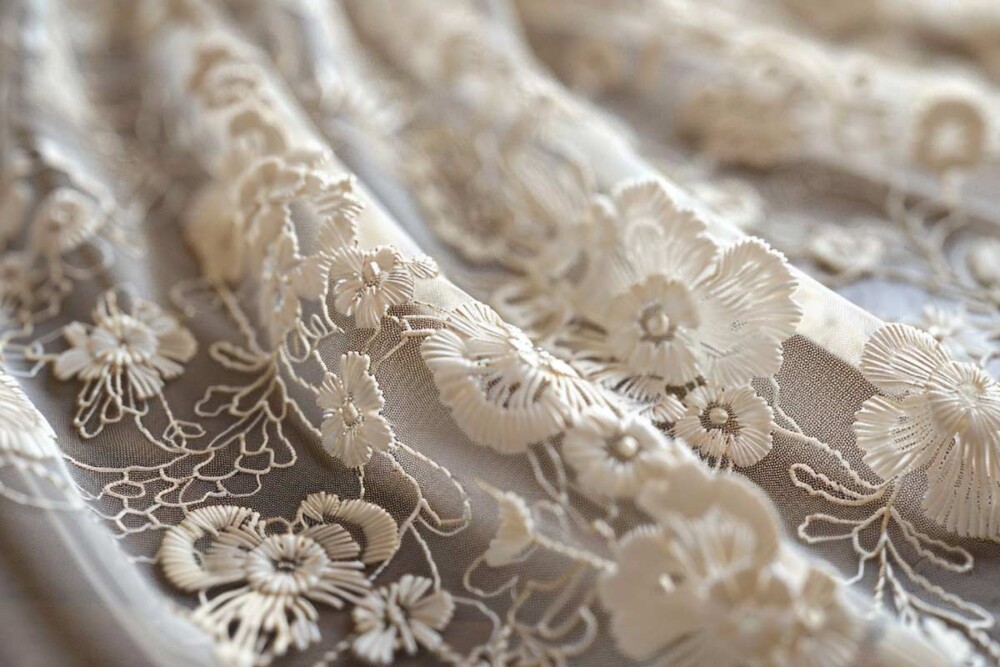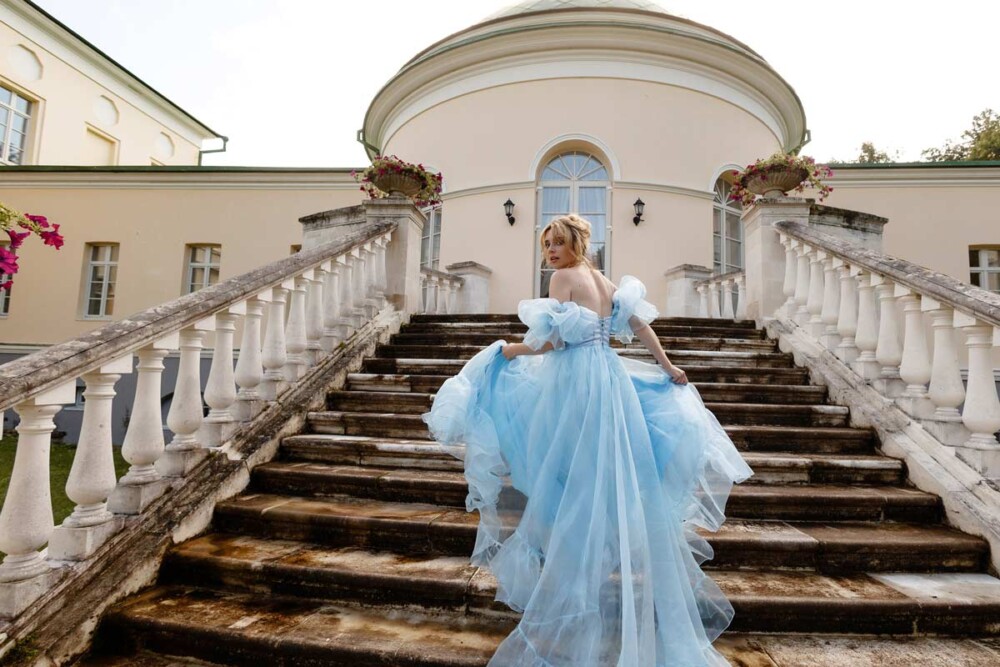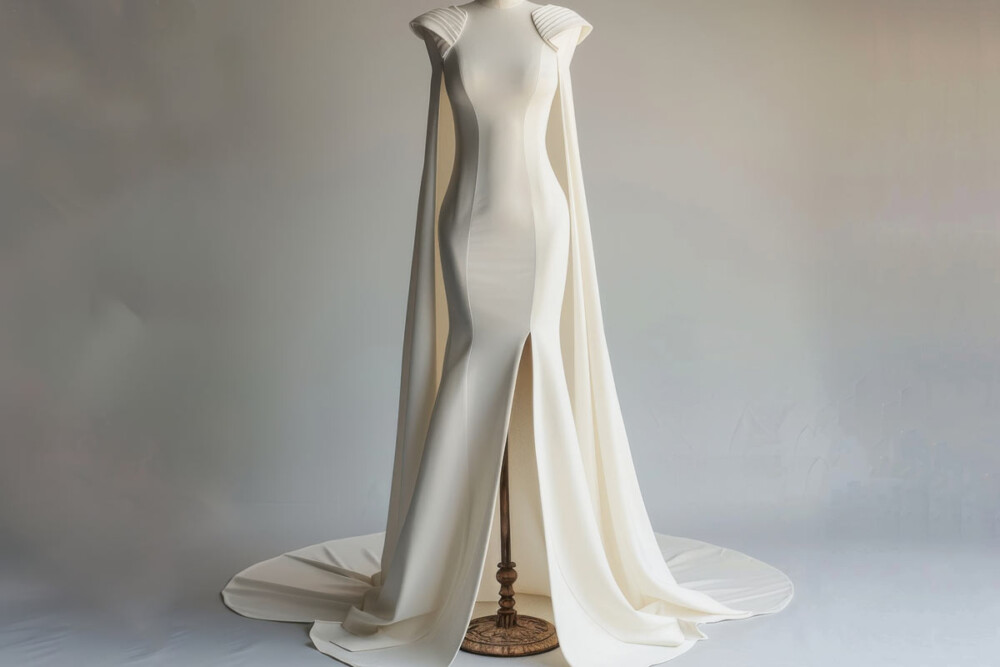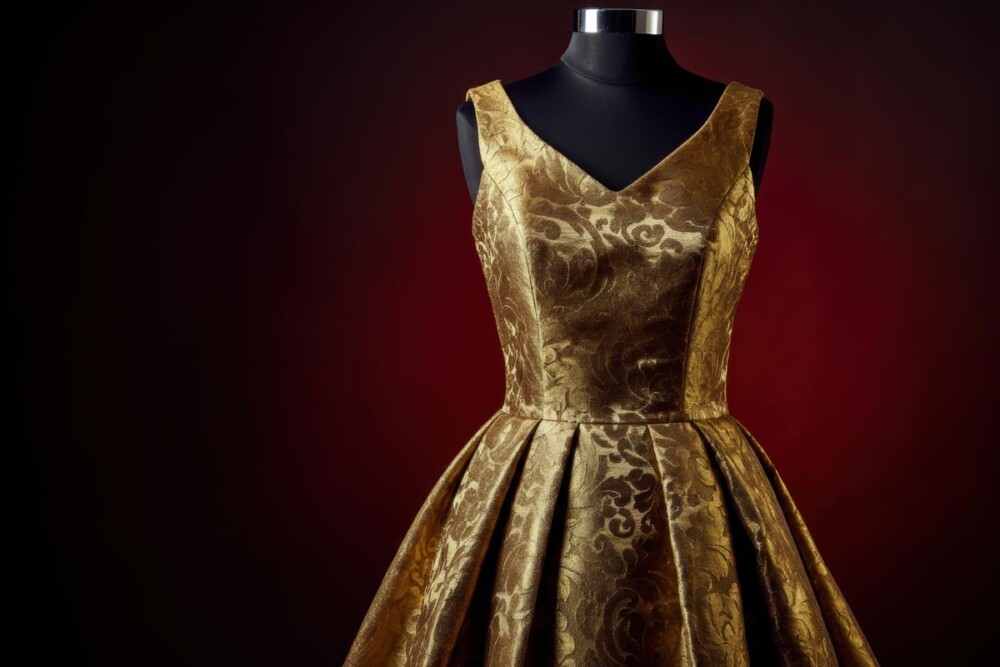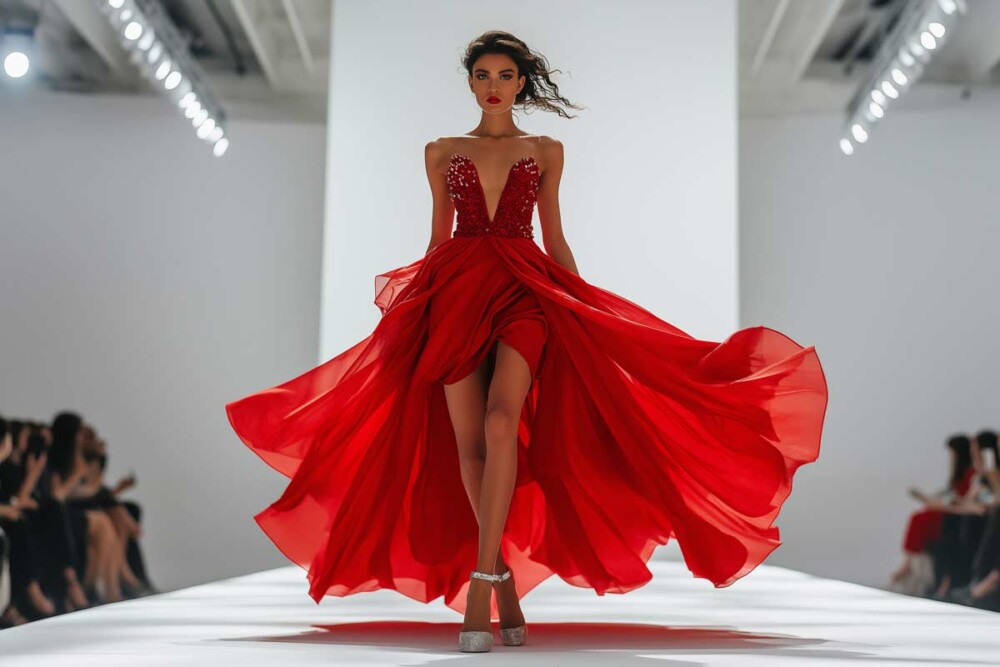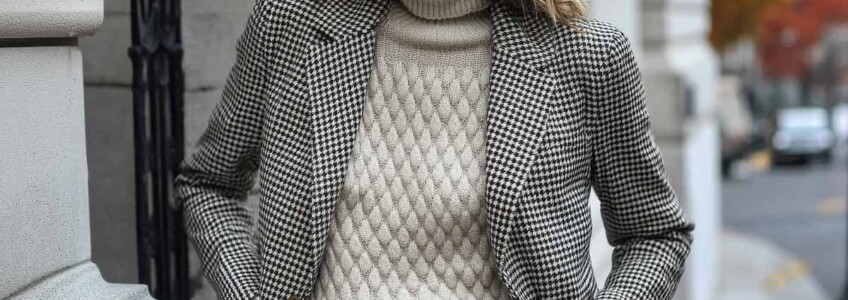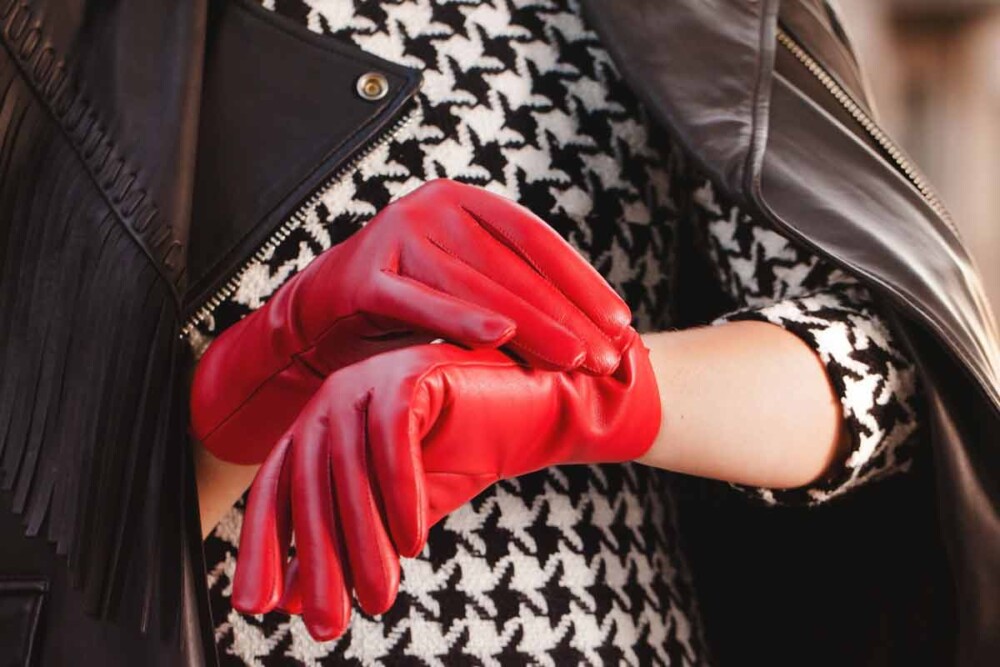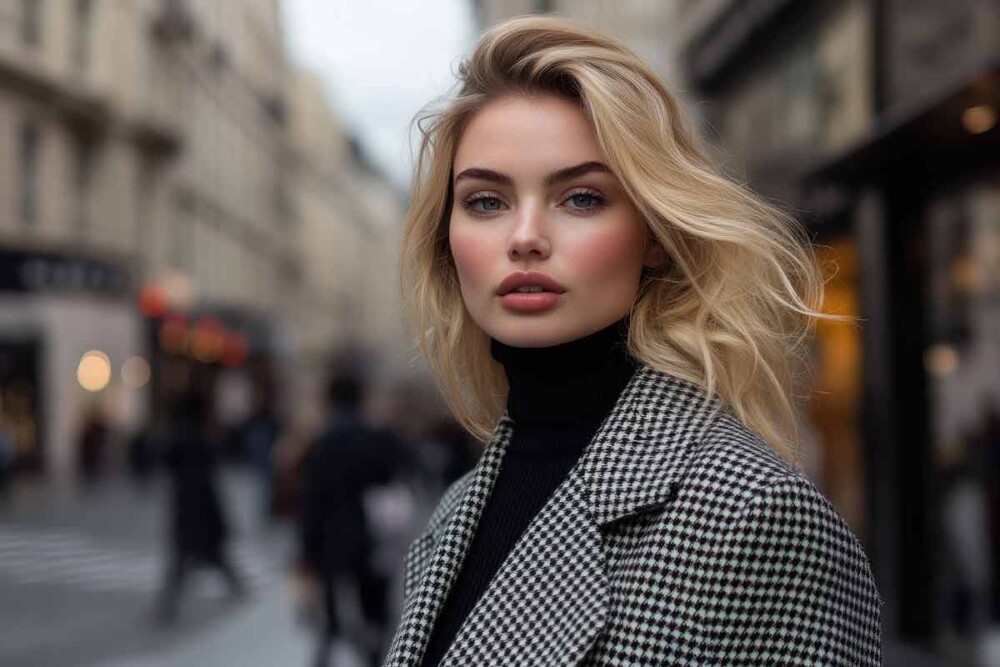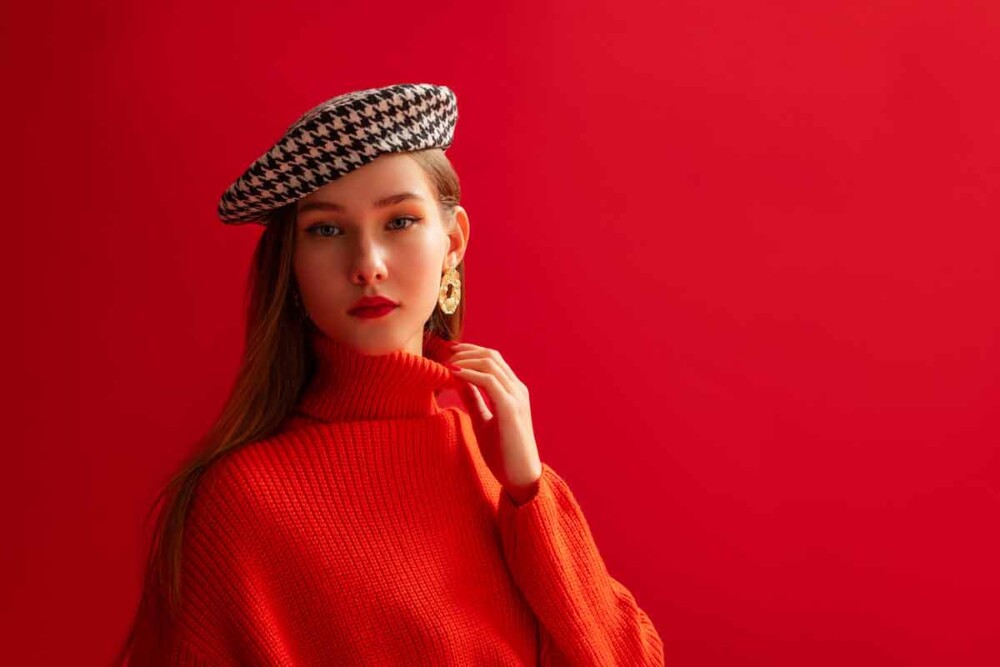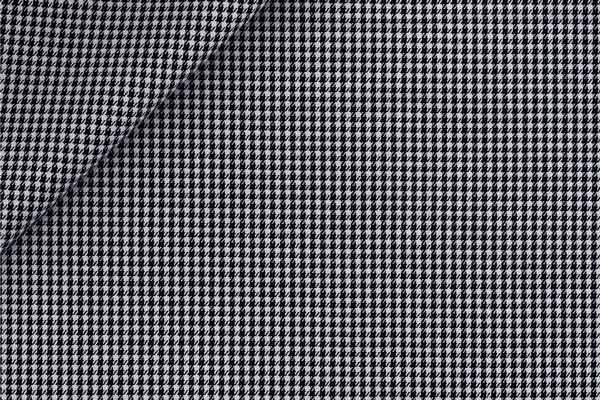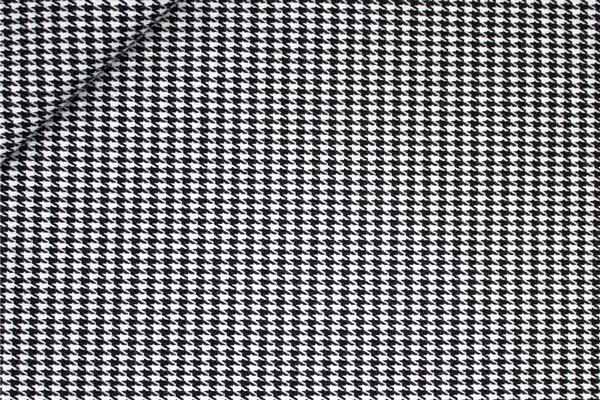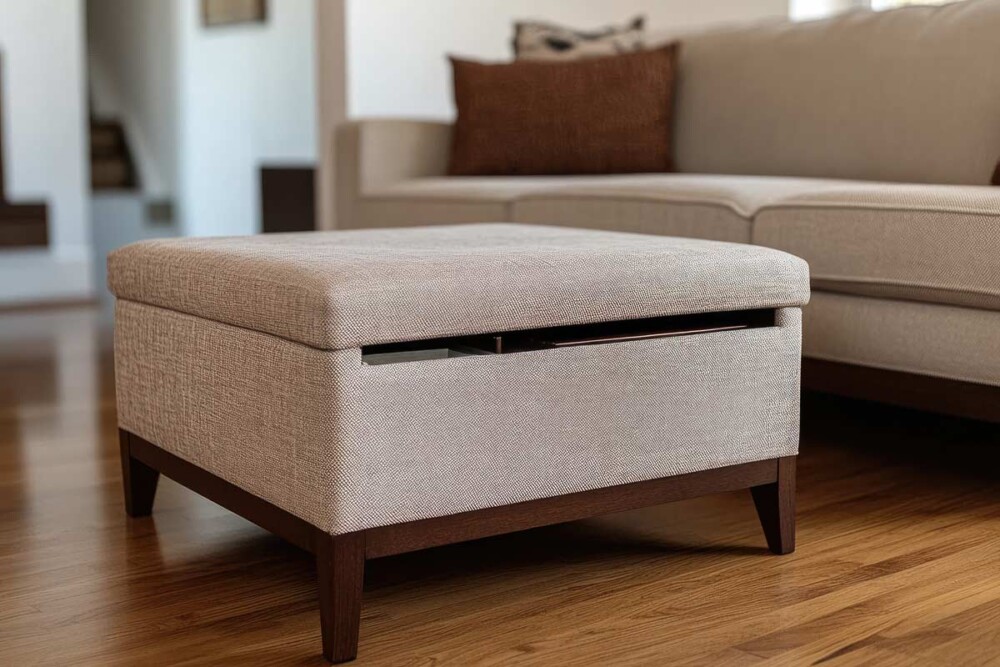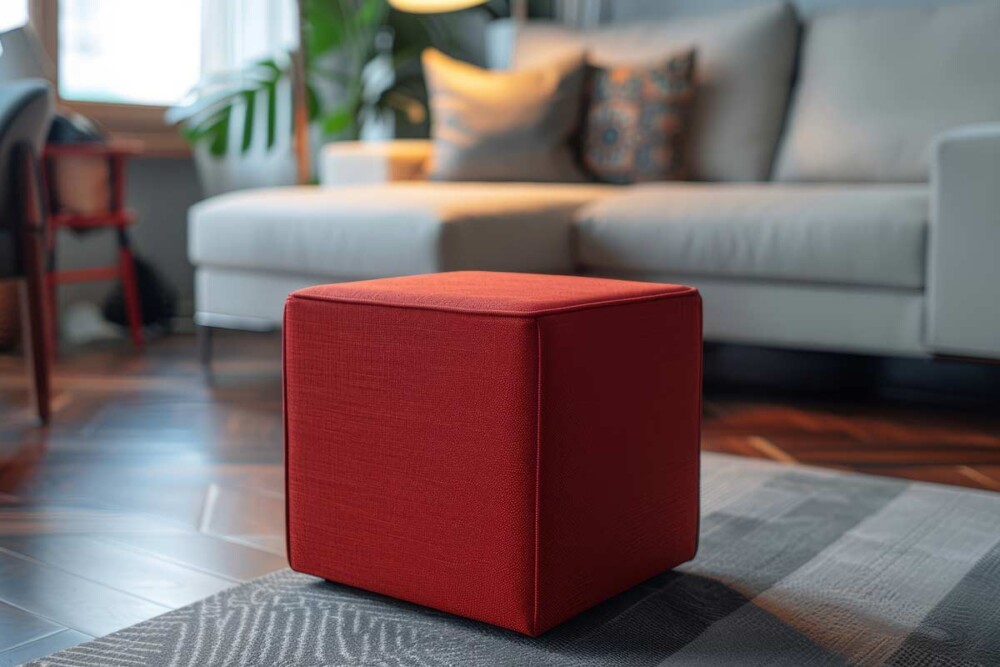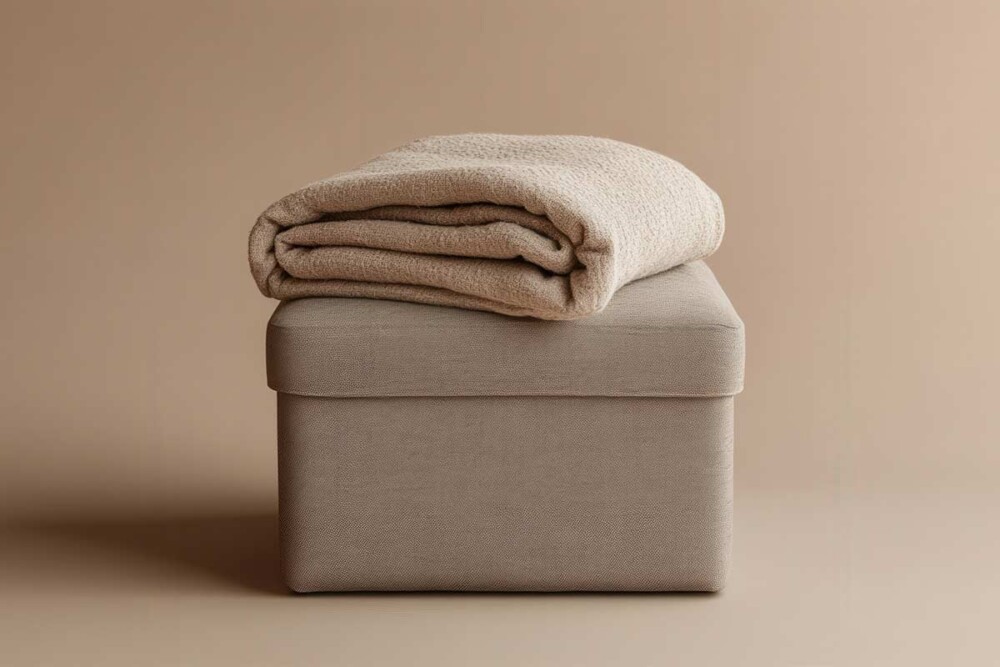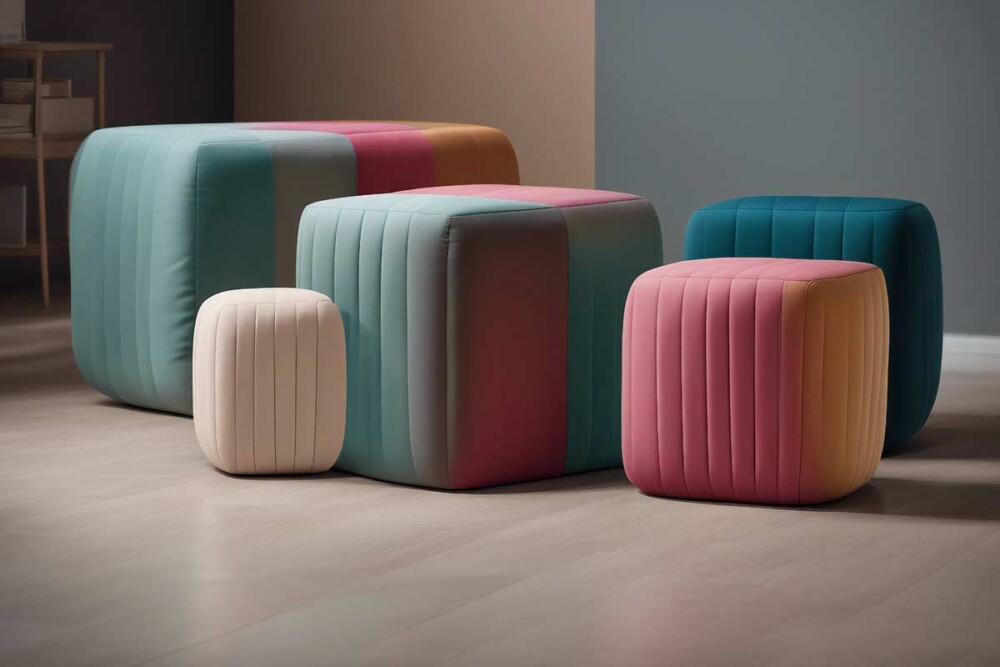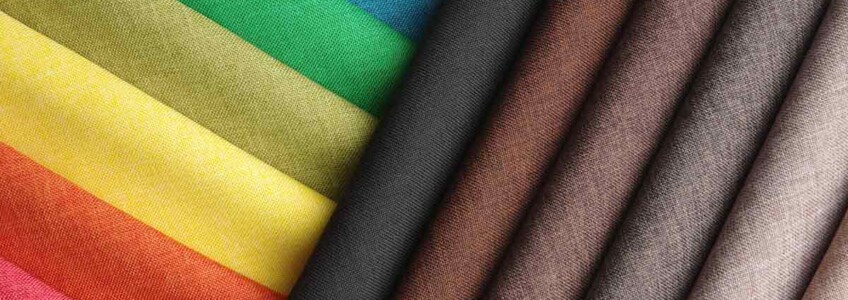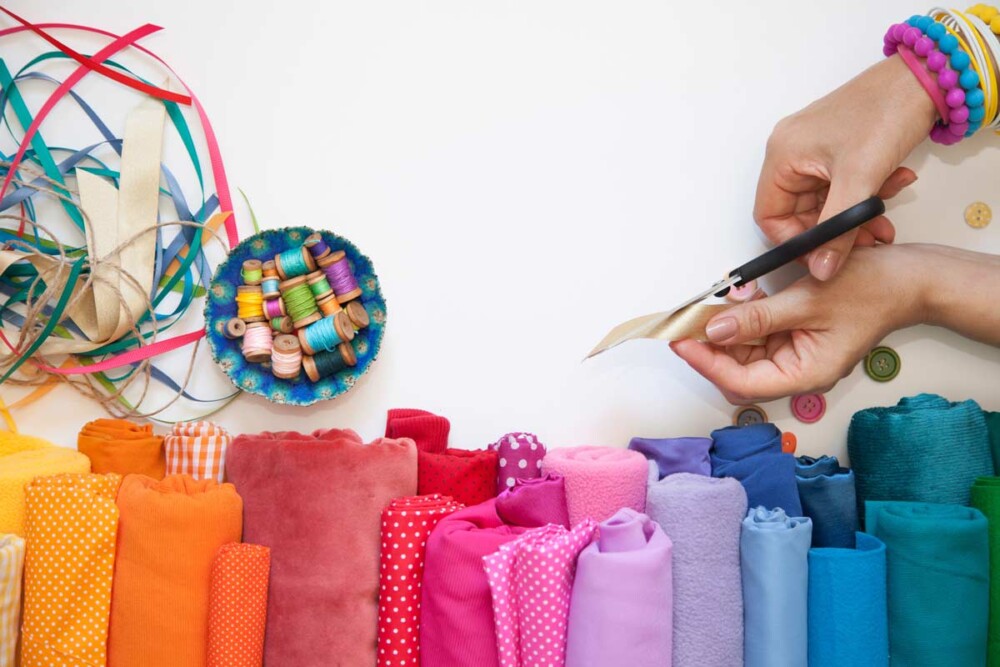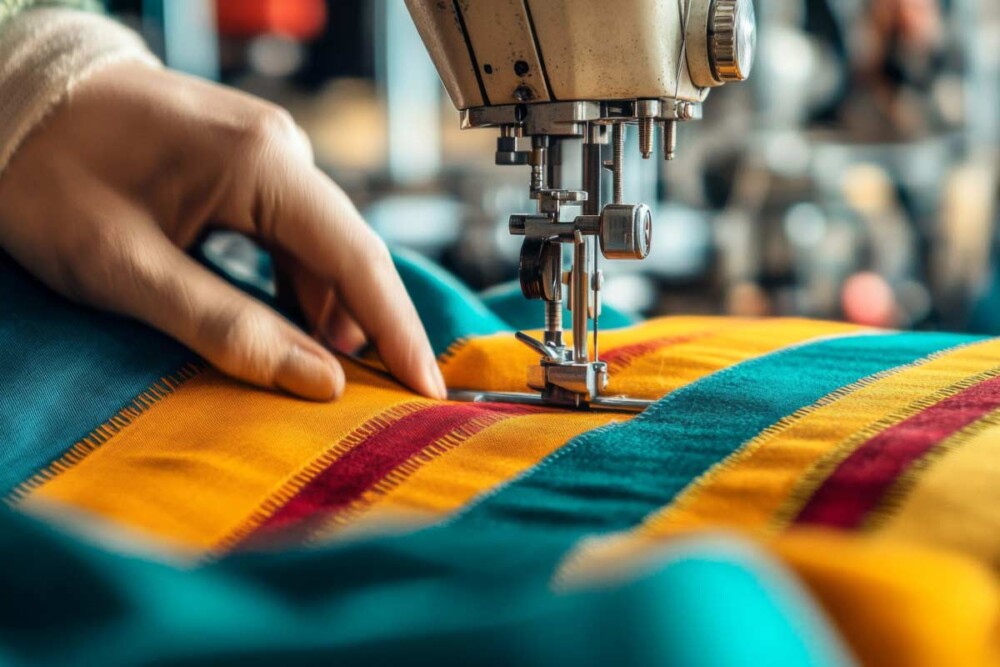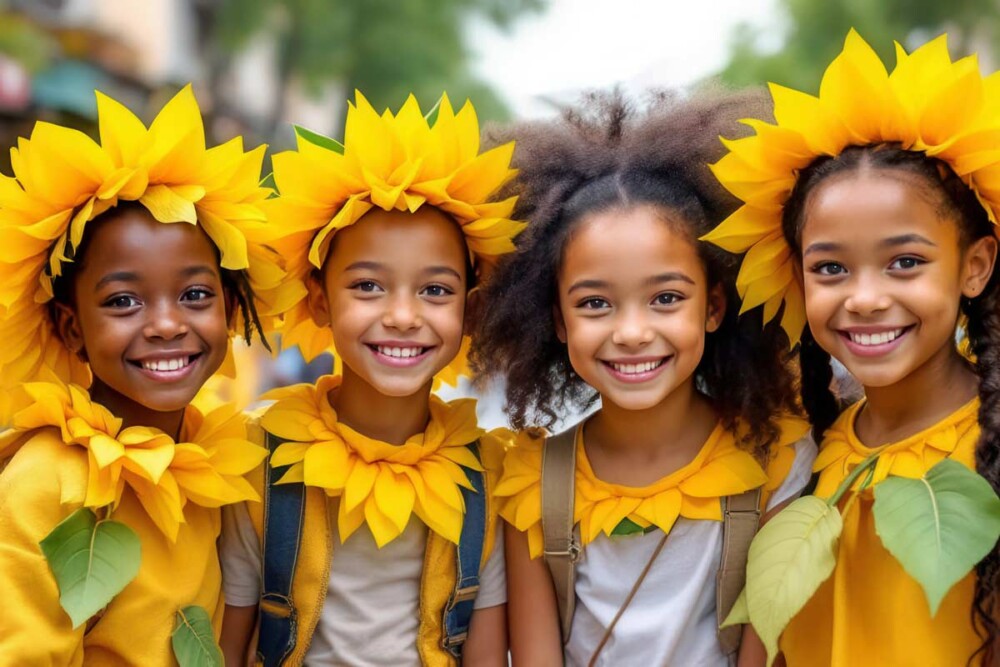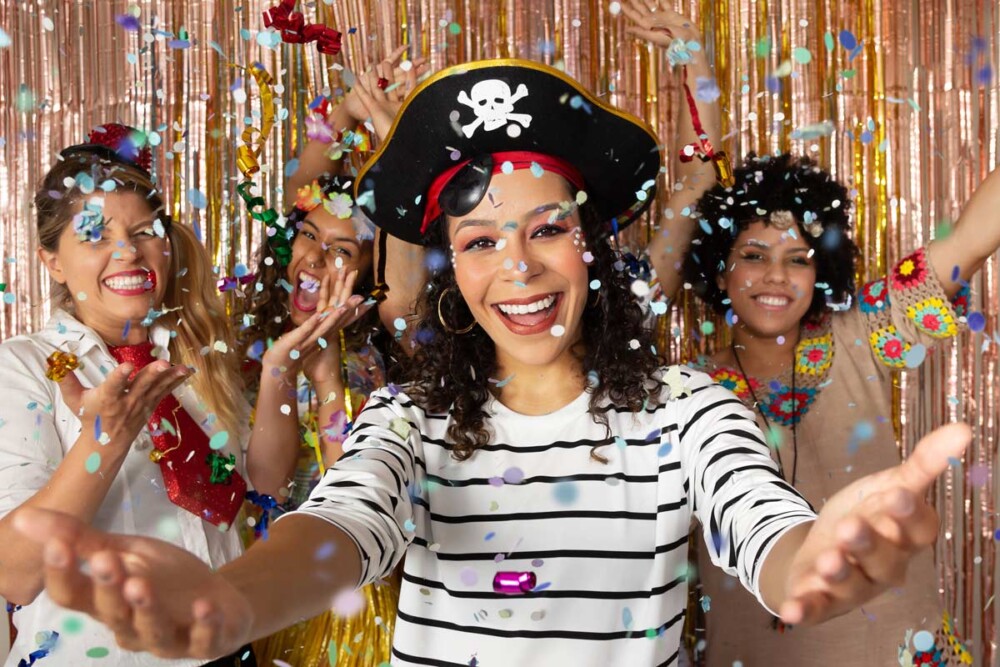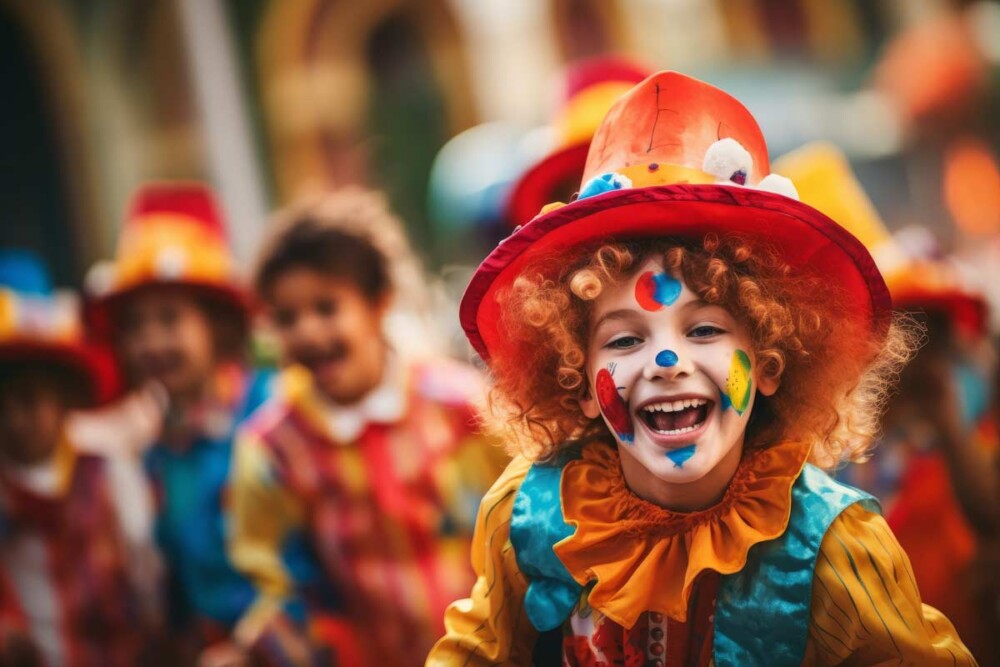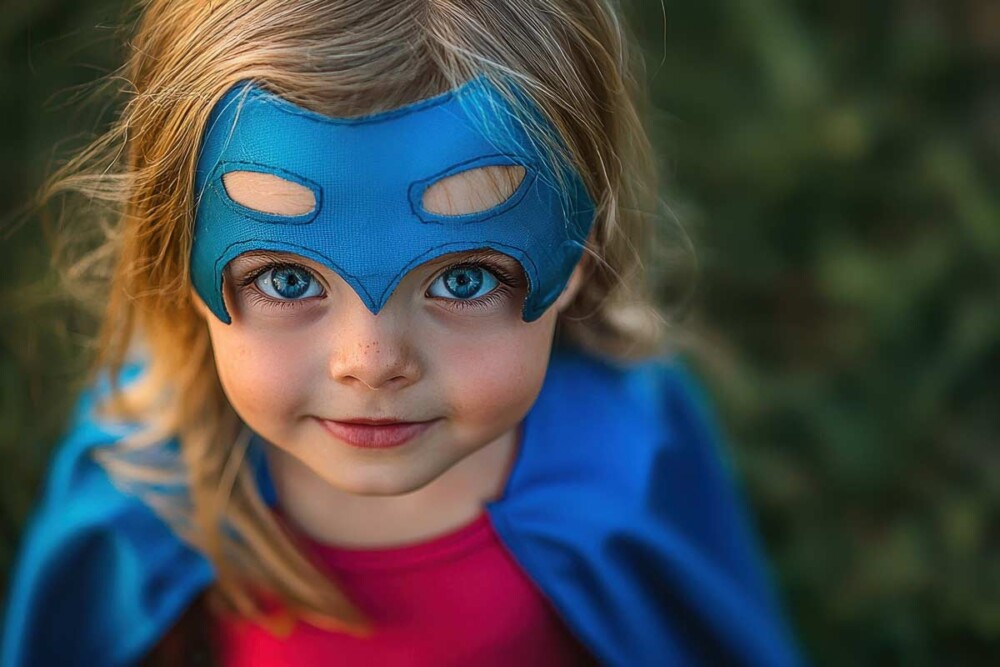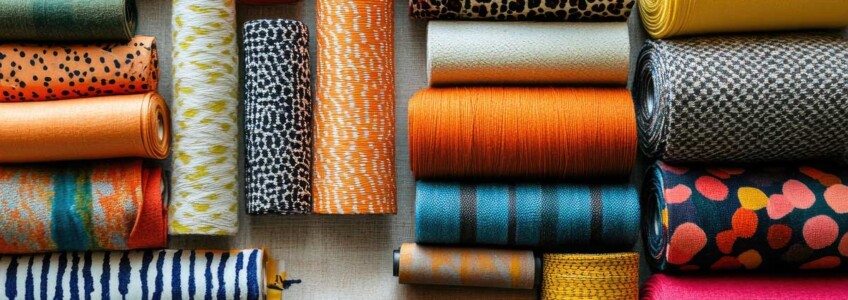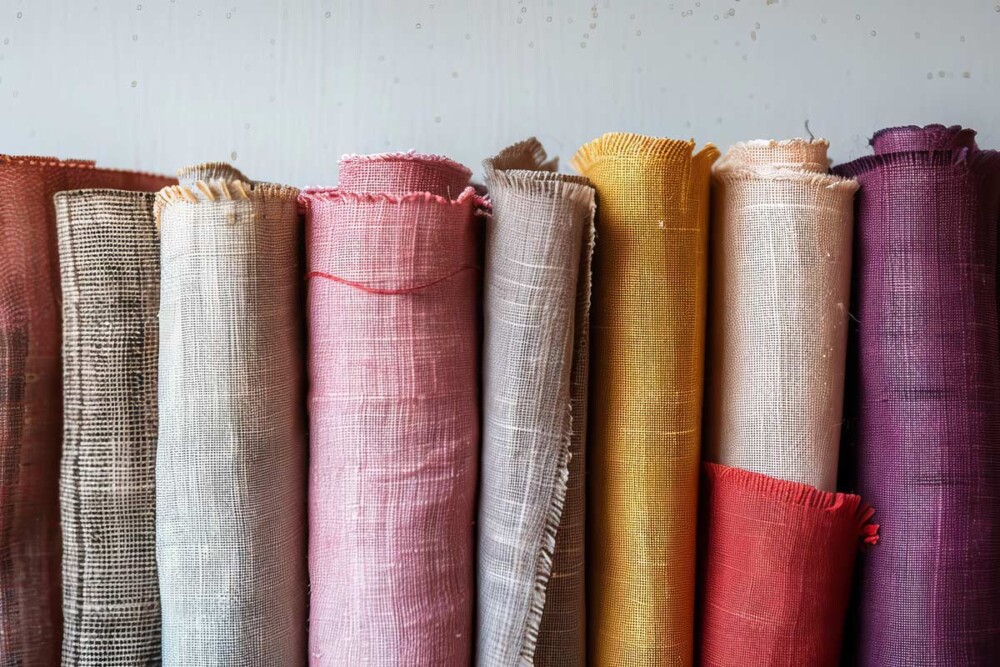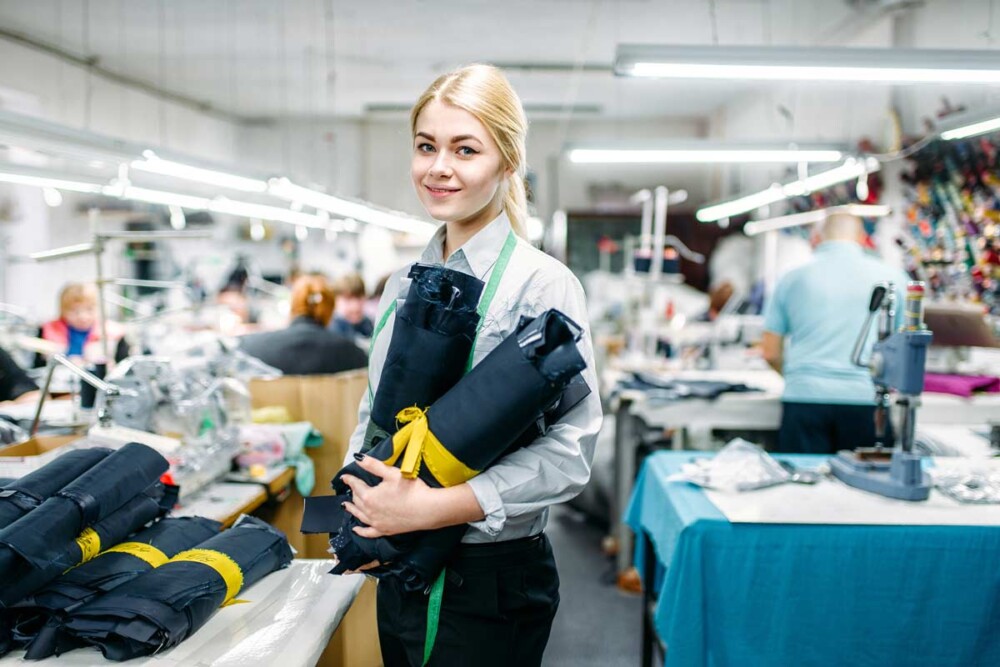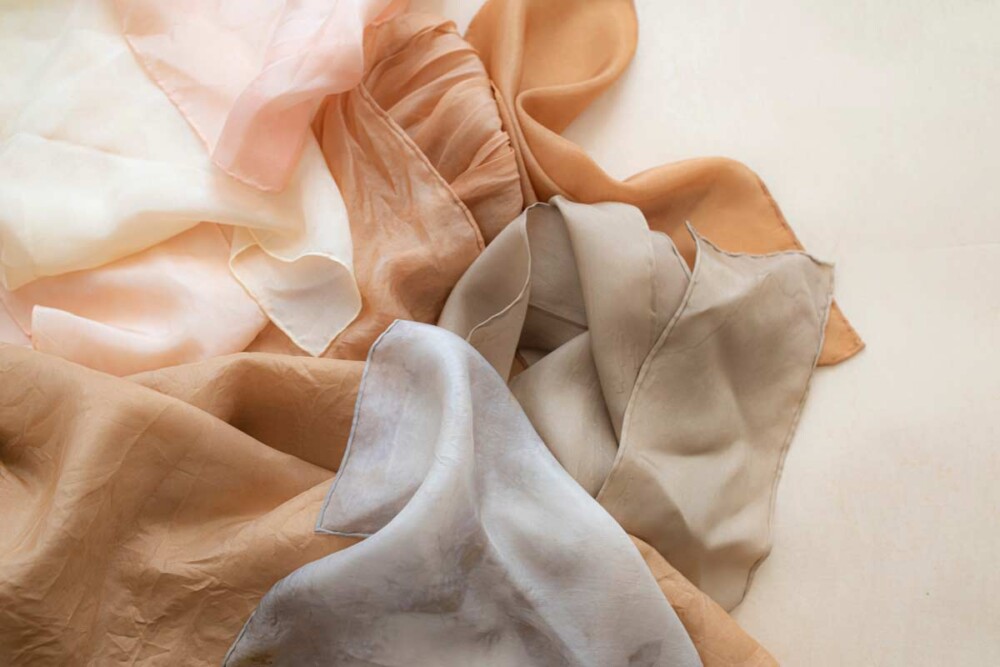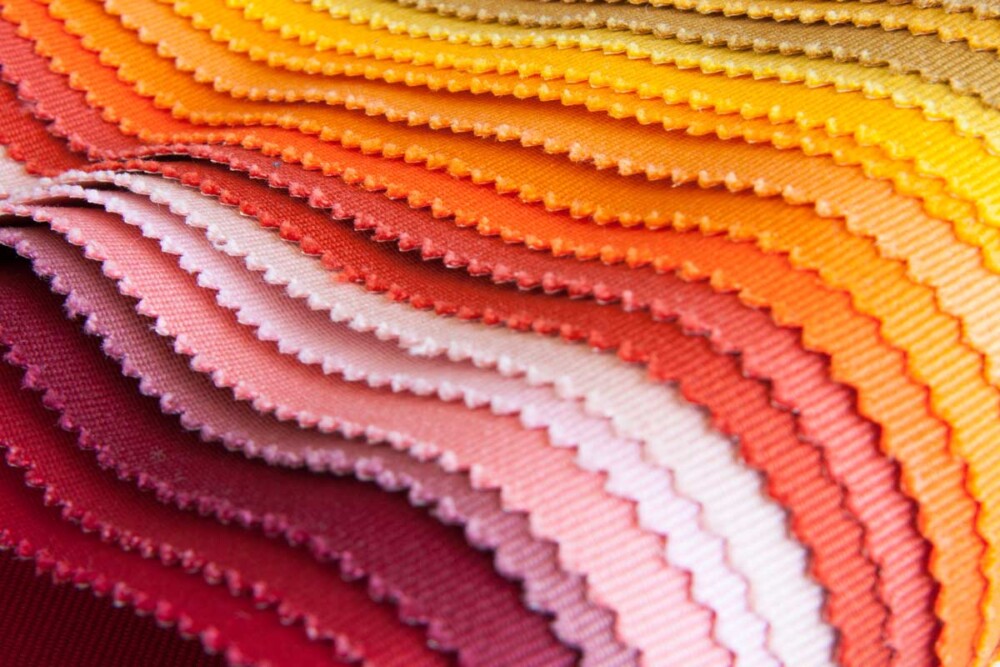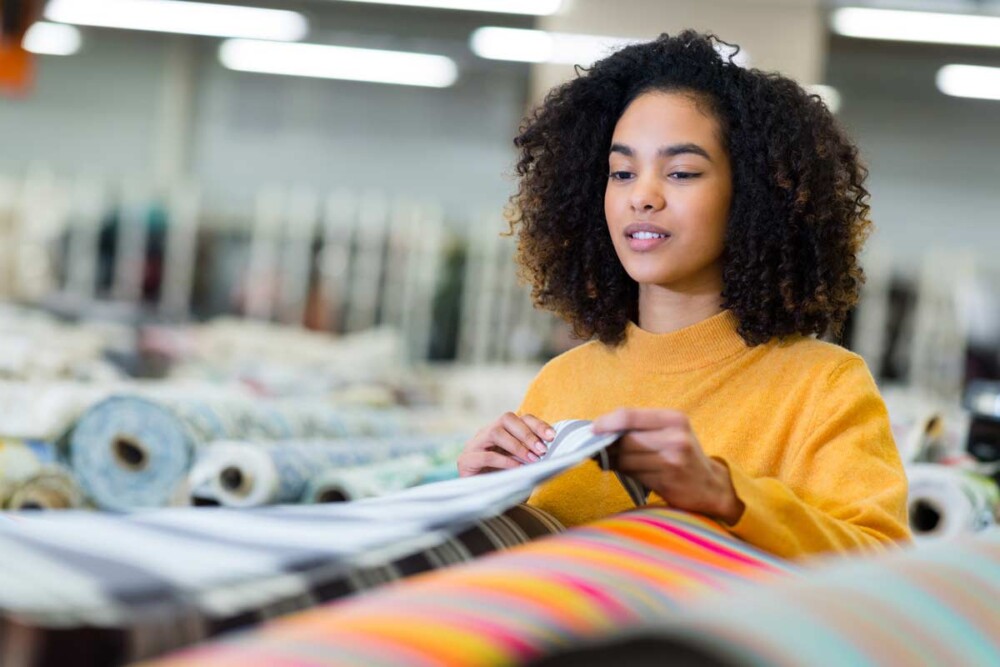The sleeping bag is one of the most loved accessories by new parents. In addition to ensuring a safe sleep for the newborn, it prevents it from being discovered during the night, keeping it warm without the risk of bulky blankets. If you like sewing or are looking for a creative project to make for your baby or to give as a gift, choose the fabrics for babies on Cimmino Shop: we will explain how to make a sleeping bag by yourself and which fabrics to choose for a safe and comfortable result.
What is a sleeping bag and what is it for
The sleeping bag is a kind of padded bag with openings for the arms and often also for the legs, which replaces blankets and sheets in the crib. It is particularly useful in the first months of life, when the baby tends to move a lot in his sleep and could easily be discovered.
It is also considered a valuable ally in preventing the risk of suffocation associated with the use of heavy blankets, as indicated by many paediatric guidelines. In addition, babies feel more content and protected, a bit like in the womb.
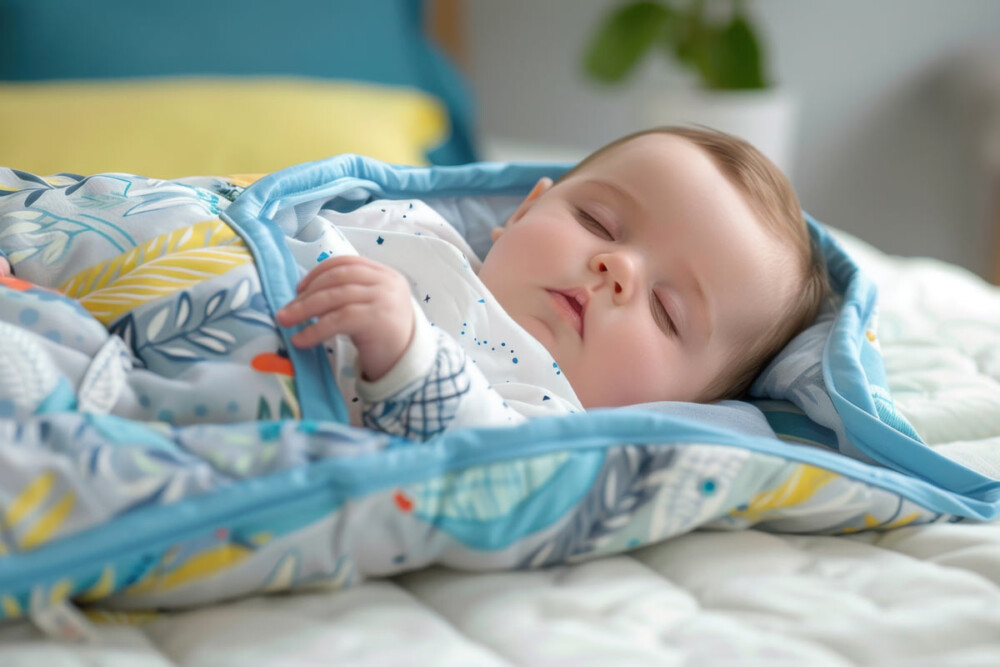
Why make a sleeping bag
Today it is easy to find ready-made sleeping bags on the market, but sewing them with your own hands has many advantages:
- You can choose the fabric that best suits the season and sensitivity of your baby’s skin.
- Get a tailor-made accessory, customizable in every detail.
- It is a simple project even for those who have little experience in sewing, but want to test yourself with something useful and creative.
Also, it is a perfect gift if you are preparing a baby shower for a friend or family member.
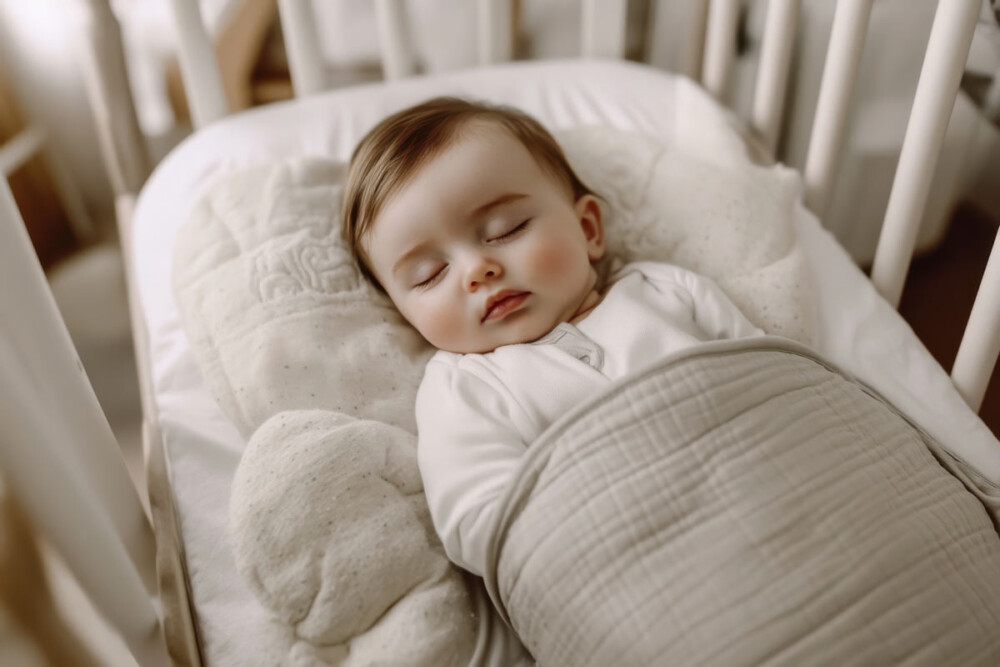
Recommended fabrics for a DIY sleeping bag
The choice of fabric is one of the most important parts in making a sleeping bag. Opt for natural, breathable and easy to wash fabrics. Here are some perfect options:
- High quality standard cotton: soft, resistant to frequent washing and suitable even for the most sensitive skin.
- Cotton flannel: ideal for the winter, it retains heat without sweating.
- Cotton jersey: elastic and lightweight, perfect for the mid-season.
- Quilted fabrics: ideal for the outside of the sleeping bag, to be combined with a softer inner lining.

The best fabrics for sleeping bags on Cimmino Shop
If you are looking for the ideal online fabrics to make a sleeping bag for your baby, Cimmino Shop offers a selection of high quality materials. Here are some of the best baby fabrics available.
Cotone Stampato Whale cm150
Cotone Stampato Whale cm150 is a 100% cotton fabric with a width of 150 cm. Featuring a nice print with whales, it’s perfect for projects dedicated to children.
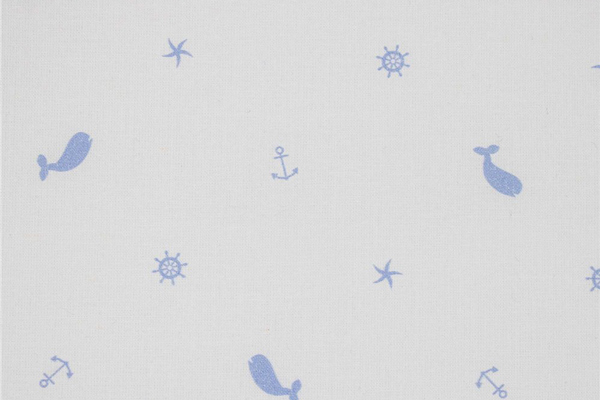
The weight of 107 g/m2 makes it lightweight and breathable, ideal for making a summer sleeping bag or for environments with higher temperatures.
Cotone Digital Enfants

Cotone Digital Enfants is a 100% cotton fabric with a width of 150 cm and a weight of 120 g/m 2. Features vibrant and colorful digital prints, ideal for creating a unique and eye-catching sleeping bag.
This fabric is also OEKO-TEX® STANDARD 100 certified, ensuring that it is free of harmful substances and safe for use in baby products. Its lightness makes it suitable for sleeping bags usable throughout the year, perhaps combined with a suitable padding for the colder seasons.
Piquet Trendy Unito
Piquet Trendy Unito is a 100% cotton fabric with a width of 150 cm and a weight of 110 g/m 2. It is distinguished by its combined piqué texture, which gives an elegant appearance and a feeling of freshness to the touch.
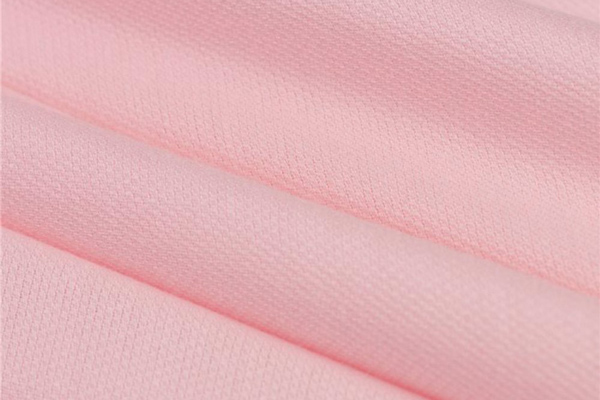
Thanks to its structure, it is particularly resistant and keeps its shape well, making it ideal for a sleeping bag that lasts over time. Available in a variety of colors, allows you to customize the project according to your taste.
Piquet Gioia Nido d’Ape

Piquet Gioia Nido d’Ape is a 100% cotton fabric with a width of 270 cm and a weight of 350 g/m 2. Its main feature is the honeycomb construction, which offers a three-dimensional texture and a remarkable absorption capacity.
This makes it particularly suitable for sleeping bags intended for the colder months, ensuring warmth and comfort to the child. The extra width allows you to easily cut larger pieces without joints, improving the aesthetics and functionality of the finished product.
Piquet Lario Nido d’Ape
Piquet Lario Nido d’Ape is another 100% cotton fabric with a width of 150 cm and a weight of 233 g/m 2. Similar to the Piquet Gioia, it has a honeycomb finish, but with a lower weight, resulting lighter.
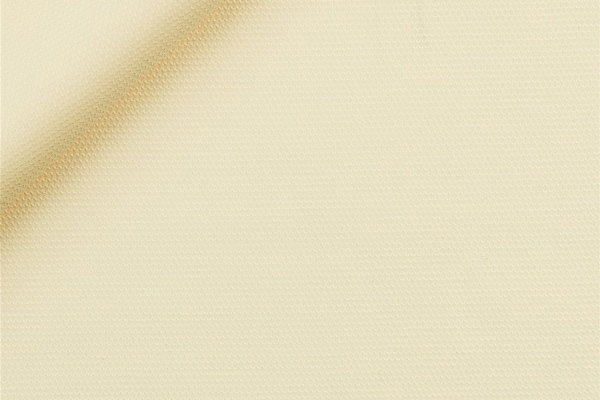
It is ideal for mid-season sleeping bags, offering a balance between breathability and thermal capacity. Its texture adds a touch of elegance to the finished product, while the composition in pure cotton ensures softness and delicacy on the skin of the newborn.
Piquet Stampato Trendy
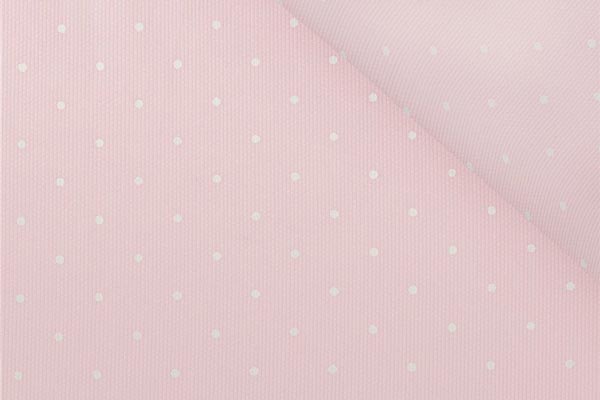
Piquet Stampato Trendy is a 100% cotton fabric with a width of 150 cm and a weight of 110 g/m 2. It stands out for its modern and fashionable prints, which allow you to create original and personalized sleeping bags.
The piqué structure gives a light texture to the fabric, while still maintaining good breathability. It is particularly suitable for those who want to make a sleeping bag that combines functionality and aesthetics, while ensuring the comfort of the child.
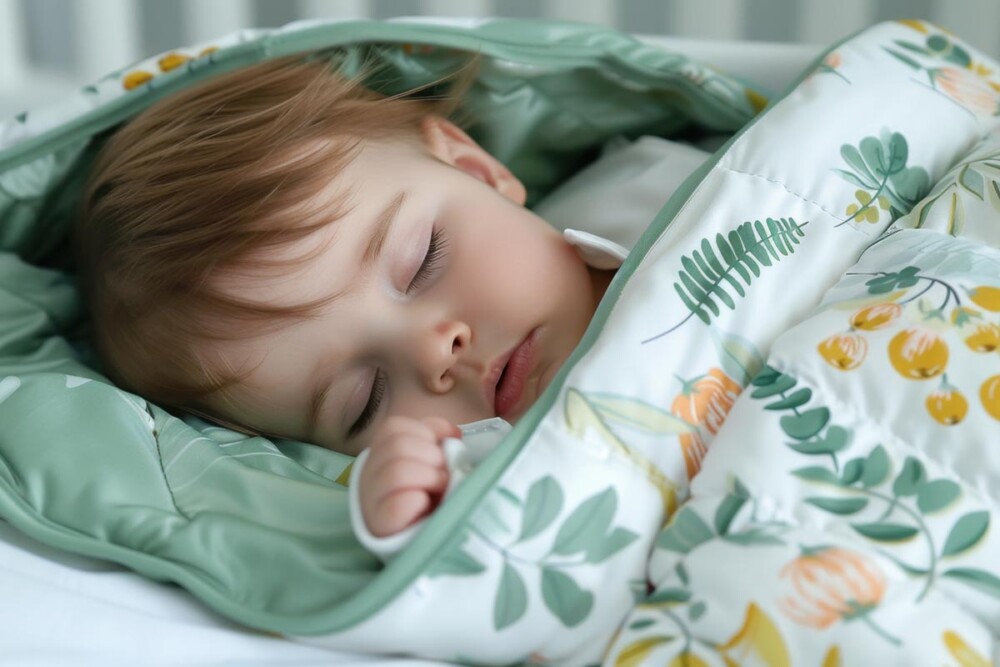
Tutorial: how to sew a baby sleeping bag
1. Choose your template
You can find free paper templates online by searching for “PDF sack sleeping pattern”. There are both with zip and buttons on the back. Choose the one that seems easiest to do.
2. Prepare the material
You will need:
- Outer fabric (cotton, jersey, flannel…)
- Inner lining (can be the same fabric or a lighter one)
- Light padding (optional)
- Zipper or snap buttons
- Scissors, pins, sewing machine, needle and thread
3. Cutting and stitching
Once the pattern is printed, cut out the fabric as shown. Remember to add 1 cm of seam margin. Start by sewing the outer fabric and lining together (with or without padding), leaving the opening for the zip or buttons. Finish the edges with a zig-zag or cut-sew to prevent them from fading.
4. Final finishing
Insert the zip (or buttons), do a test with the upside down bag to check seams and measurements, and possibly add some decorative detail: a pocket, a cloth application, a name label.
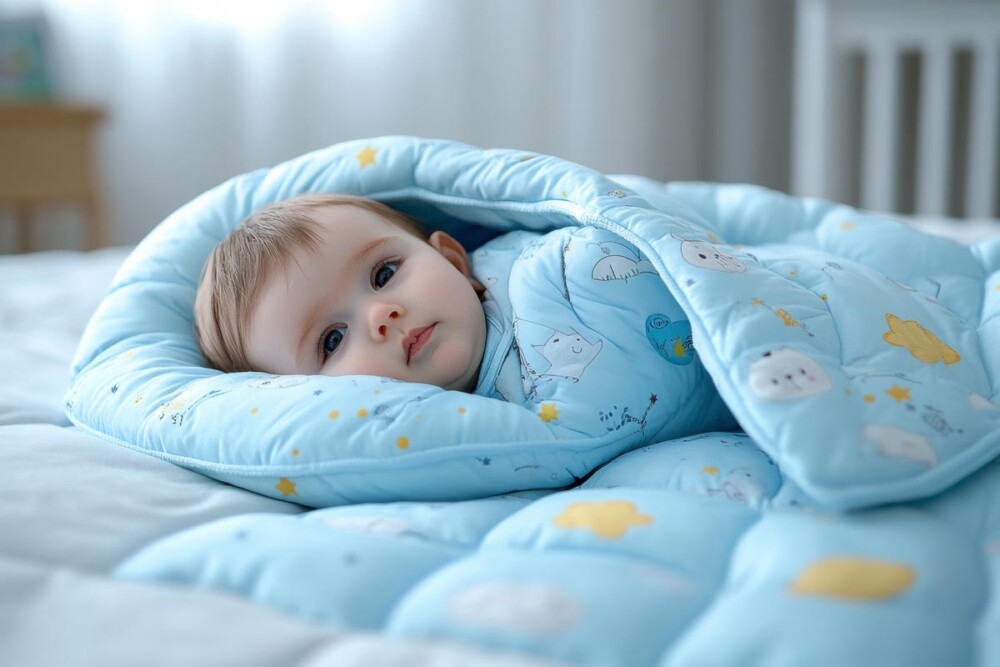
How to wash and maintain the sleeping bag
The sleeping bag, like all accessories for early childhood, must be easy to wash. For this we recommend:
- Always pre-wash fabrics before sewing them, to prevent shrinkage afterwards.
- Wash the sleeping bag at 30-40°C with neutral detergent.
- Avoid using scented fabric softeners, which may irritate the baby’s skin.
- Prefer air drying, but if you use the dryer, set it to gentle mode.
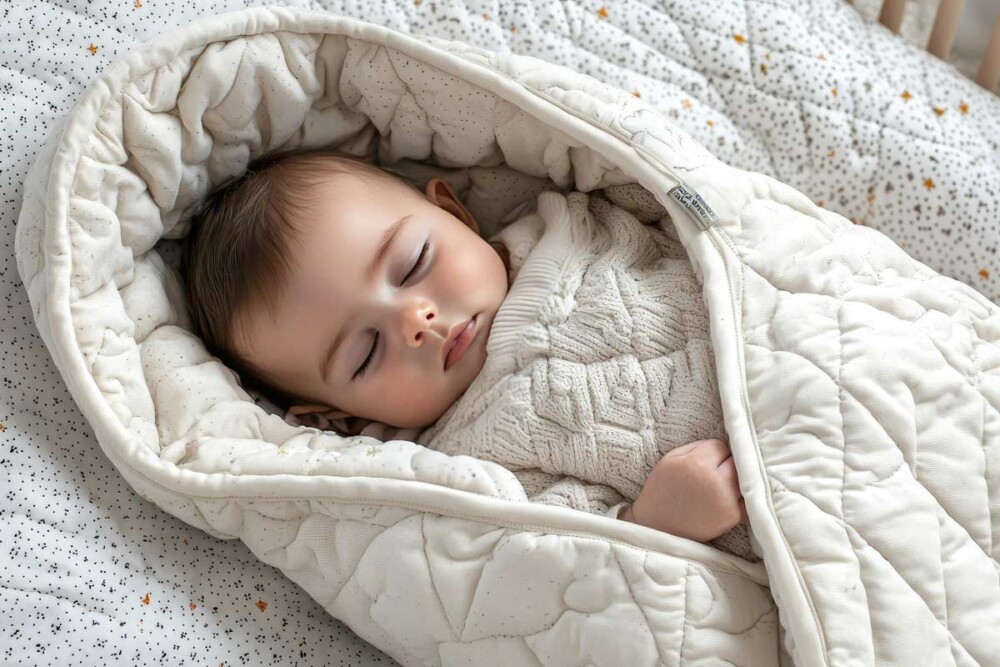
FAQ – Frequently Asked Questions about the Make-It-Yourself Sleeping Bag
The ideal fabric depends on the season and the intended use: for summer we recommend light cotton or jersey, while in winter flannel or quilted fabrics are excellent. It is important to avoid synthetic materials in direct contact with the baby’s skin.
The sleeping bag can be used from birth until 3 years old, depending on the model and size. There are variations by age groups such as 0-6 months, 6-18 months and 18-36 months.
Usually you need about 1 meter of outer fabric and 1 meter of inner lining. If you are planning a padding, it is useful to add also 1 meter of wadding or other insulating material, taking into account the size chosen.
No, it is a project suitable even for beginners. With a simple pattern paper, a little attention and a basic sewing machine you can achieve an excellent result even without great experience.
Yes, fabrics such as cotton, jersey or flannel used for clothing are also perfect for a sleeping bag, provided they are breathable, soft and suitable for the skin of newborns. It is best to avoid hard fabrics or those treated with aggressive chemicals.



